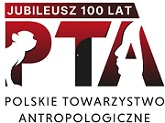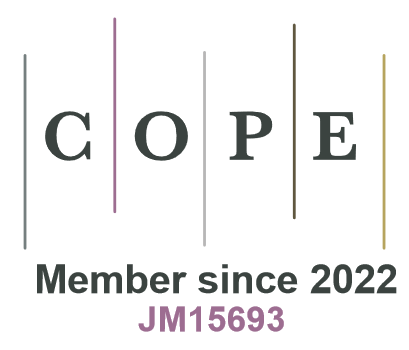Development of relative body mass (BMI) of students from Łódź, depending on the selected environmental, psychological and sociological factors
DOI:
https://doi.org/10.1515/anre-2016-0031Keywords:
height-to-weight ratio, students’ lifestyle, socio-economic status, stimulants, diets, eating disorders, physical activity, blood pressureAbstract
The human height-to-weight ratio is an important parameter of the body homeostasis. Currently, the most popular measurement determining the relationship between body mass and height is the Quetelet II indicator, called Body Mass Index (BMI). The aim of this study is an evaluation of the differences in the height-to-weight ratios, depending on selected environmental, psychological and sociological factors in people studying at higher education institutions in Łódź. The research was conducted among students of higher education institutions in Łódź, by electronic means or with the use of an anonymous survey. It consisted of 28 closed single or multiple choice questions. Statistical analysis was made of complete results of the research involving 135 people, both males and females, aged between 19-26. It was revealed that the factors related to higher BMI values in students are the following: the presence of a tendency in the students to gain weight themselves, and a tendency to gain weight present in their mothers, an evaluation of their own body mass as excessive, regularly smoking cigarettes and rarely undergoing medical check-ups. Among the factors connected with lower BMI values are: regular coffee consumption, perception of their own body mass as being too low, and also obtaining systolic pressure values below 110 mm Hg. Additionally, a positive correlation between taking up physical activity and higher values of systolic blood pressure (p<0.05) was shown. Among the subjects, it was found that 92% of the underweight women declared that their body mass and figure were normal. In the case of women with optimal BMI values, 40% stated that their body mass was excessive. In the case of men the problem was reverse: 50% of the subjects who were either overweight or obese claimed that their body mass was within the norm. The factors that significantly influence body proportion differences among students include the subject’s and the subject’s mother’s tendency to put on weight, self-evaluation of their own body mass, the values of systolic blood pressure, coffee consumption and cigarette smoking, as well as the frequency of medical check-ups.
Downloads
References
Audrain-McGovern J, Benowitz N. 2011. Cigarette smoking, nicotine, and body weight. Clin Pharmacol Ther 90(1):164-68.
View in Google Scholar
Aoki, Y, Yoon S S, Chong Y, & Carroll M D. 2014. Hypertension, abnormal cholesterol, and high body mass index among non-Hispanic Asian adults: United States, 2011-2012. NCHS Data Brief 140:1-8.
View in Google Scholar
Bakuradze T, Parra G A M, Riedel A, Somoza V, Lang R, Dieminger N, Richling E. 2014. Four-week coffee consumption affects energy intake, satiety regulation, body fat, and protects DNA integrity. Food Res Int 63:420-7.
View in Google Scholar
Biernat J, Wyka J. 2011. Stan odżywienia w aspekcie stanu zdrowia. Now Lek 80 (3):209-12.
View in Google Scholar
Cameron AJ, Ball K, Pearson N, Lioret S, Crawford DA, Campbell K, Hesketh K, McNaughton SA. 2012. Socioeconomic variation in diet and activity-related behaviours of Australian children and adolescents aged 2-16 years. Pediatr Obes 7:329-42.
View in Google Scholar
Chodkiewicz J. 2006. Picie alkoholu oraz wiedza o jego działaniu wśród studentów łódzkich szkół wyższych. Alkohol Narkom 19(2):107-19.
View in Google Scholar
Church TS, Earnest CP, Skinner JS, Blair SN. 2007. Effects of different doses of physical activity on cardiorespiratory fitness among sedentary, overweight or obese postmenopausal women with elevated blood pressure: a randomized controlled trial. JAMA-297(19):2081-91.
View in Google Scholar
Czyżewski Ł. 2008. Nadwaga i otyłość jako czynniki ryzyka wystąpienia nadciśnienia tętniczego. Probl Pielęg 16(1,2):128-35.
View in Google Scholar
Ewing R, Schmid T, Killingsworth R, Zlot A, Raudenbush S. 2003. Relationship between urban sprawl and physical activity, obesity, and morbidity. Am J Health Promot 18(1):47-57.
View in Google Scholar
Flegal K.M, Graubard B.I, Williamson D.F, Gail M.H. 2007. Cause-specific excess deaths associated with underweight, overweight, and obesity. JAMA 298(17):2028-37.
View in Google Scholar
James PT. 2004. Obesity: The worldwide epidemic. Clin Dermatol 22:276-80.
View in Google Scholar
Kołoło H, Woynarowska B. 2004. Samoocena masy ciała i odchudzania się młodzieży w okresie dojrzewania. Prz Pediatr 34 (3/4):196-201.
View in Google Scholar
Kostenecka A. 2007. Niektóre zachowania zdrowotne studentów a ich masa ciała. Medical and Biological Sciences 21(3):53-58.
View in Google Scholar
Koszowska A, Dittfeld A, Zubelewicz-Szkodzińska B. 2013. Psychologiczny aspekt odżywiania oraz wpływ wybranych substancji na zachowania i procesy myślowe. Hygeia Public Health .48(3): 279-284.
View in Google Scholar
Kowalewski W, Hebel K. 2013. Podwyższone ciśnienie tętnicze jako czynnik ryzyka sercowo- naczyniowego. Annales Academiae Medicae Stetinensis – Roczniki Pomorskiej Akademii Medycznej w Szczecinie. 59(1):18-24.
View in Google Scholar
Kuklińska-Szukalska, K, Chlebna-Sokół, D. 2011. Styl życia a występowanie otyłości w badanej grupie dzieci łódzkich. Prz Pediatr 41:152-8.
View in Google Scholar
Kurpas D, Mroczek B, Bielska D, Wojtal M, Seń M, Steciwko A. 2012. Spożycie alkoholu i palenie tytoniu wśród studentów wyższych uczelni medycznych. Prz Lek 10:893-5.
View in Google Scholar
Maćkowiak K, Nowicki M, Wysocka E, Brożek A, Torliński L. 2012. Wpływ palenia tytoniu na wybrane czynniki ryzyka chorób sercowo-naczyniowych u studentów Uniwersytetu Medycznego w Poznaniu. Prz Lek 10:817-23.
View in Google Scholar
Malara B, Jośko J, Kasperczyk J, Kamecka-Krupa J. 2010. Rozpowszechnienie zaburzeń odżywiania wśród młodzieży w wybranych miastach województwa śląskiego Probl Hig Epidemiol 91(3):388-92.
View in Google Scholar
Małecka-Tendera E, Klimek K, Matusik P, Olszanecka-Glinianowicz M, Lehingue Y. 2005. Obesity and overweight prevalence in Polish 7- to 9-year-old children. Obes Res 13(6):964-8.
View in Google Scholar
Martínez JA, Milagro FI, Claycombe KJ, Schalinske KL. 2014. Epigenetics in adipose tissue, obesity, weight loss, and diabetes. Adv Nutr 5(1):71-81.
View in Google Scholar
Meule A, Vögele C. 2013. The psychology of eating. Front Psychol 4(215):1-2.
View in Google Scholar
Morandi A, Meyre D, Lobbens S, Kleinman K, Kaakinen M, et al. 2012. Estimation of newborn risk for child or adolescent obesity: lessons from the longitudinal birth cohorts. PLoS One 7:e49919.
View in Google Scholar
Nicklas B.J, Tomoyasu N, Muir J, Goldberg A.P. 1999. Effects of cigarette smoking and its cessation on body weight and plasma leptin levels. Metabolism 48(6):804-08.
View in Google Scholar
Nowak-Zaleska A, Zaleski R, Wilk B, Walentukiewicz A. 2013. Physical activity and BMI in students beginning their studies at the Gdansk University of Physical Education and Sport in the academic year 1999/2000 and 2009/2010. BJHPA 5(2):93-8.
View in Google Scholar
Osiecka Chojnacka J. 2012. Obesity epidemic. INFOS Zagadnienia społecznogospodarcze 3 (117):1-4.
View in Google Scholar
Piotrowska E, Żechałko-Czajkowska A, Biernat J, Mikołajczak J. 2009.Ocena wybranych cech stylu życia kształtujących stan zdrowia 16-18 letnich dziewcząt stosowanie różnych diet, aktywność fizyczna, palenie papierosów i picie alkoholu. Cz.I. St Roczn. PZH. 60(1):51-57.
View in Google Scholar
Plewa M, Markiewicz A. 2006. Aktywność fizyczna w profilaktyce i leczeniu otyłości. Endokrynol Otyłość 1:30-37.
View in Google Scholar
Poínhos R, Oliveira B M P M, Correia F. 2013. Eating behavior patterns and BMI in Portuguese higher education students. Appetite. 71:314-20.
View in Google Scholar
Poręba R, Gać P, Zawadzki M, Poręba M, Derkacz A, Pawlas K, Pilecki W, Andrzejak R. 2008. Styl życia i czynniki ryzyka chorób układu krążenia wśród studentów uczelni Wrocławia. Pol Arch Med Wew 118(3):1-9.
View in Google Scholar
Romanowska-Tołłoczko A. 2011. Styl życia studentów oceniany w kontekście zachowań zdrowotnych. Hygeia Public Health. 46(1):89-93.
View in Google Scholar
Sanchez-Vaznaugh E V, Kawachi I, Subramanian S V, Sa´nchez B N, Acevedo-Garcia D,. 2008. Differential effect of birthplace and length of residence on body mass index (BMI) by education, gender and race/ ethnicityq. Soc Sci Med 67:1300-10.
View in Google Scholar
Sikorska-Wiśniewska G. 2007. Nadwaga i otyłość u dzieci i młodzieży. Żywn Nauka Technol Jakość 6(55):71-80.
View in Google Scholar
Sitek A, Rosset I, Strapagiel D, Majewska M, Ostrowska-Nawrycz L, Żądzińska E. 2014. Association of FTO gene with obesity in Polish schoolchildren. Anthropol Rev 77 (1):33-44.
View in Google Scholar
Strzelecki W, Cybulski M, Strzelecka M, Dolczewska- Samela A. 2007, Zmiana wizerunku medialnego kobiety a zaburzenia odżywiania we współczesnym świecie. Now Lek 76(2):173-81.
View in Google Scholar
Taylor SJC, Viner R, Booy R, Head J, Tate H, Brentnall SL, Haines M, Bhui K, Hillier S, Stansfeld S. 2005. Ethnicity, socio-economic status, overweight and underweight in East London adolescents. Ethnic Health 10(2):113-28.
View in Google Scholar
Vaag A, Grunnet L.G, Arora G.P, Brons C. 2012. The thrifty phenotype hypothesis revisited. Diabetologia 55(8):2085-8.
View in Google Scholar
Waalen J. 2014. The genetics of human obesity. Transl Res 164(4):293-301.
View in Google Scholar
Walentukiewicz A, Łysak A, Wilk B. 2013. Zachowania zdrowotne studentek pielęgniarstwa. Probl Pielęg 21(4):484-8.
View in Google Scholar
Wang Y, Beydoun MA. 2007. The obesity epidemic in the United States-gender, age, socioeconomic, racial/ethnic, and geographic characteristics: a systematic review and meta-regression analysis. Epidemiol Rev 29:6-28.
View in Google Scholar
World Health Organization, 2013. Available at: http://www.emro.who.int/nutrition/information-resources/bmi-calculator.html.
View in Google Scholar
Wizner B, Stolarz K, Adamkiewicz-Piejko A, Życzkowska J, Kawecka-Jaszcz K, Grodzki T. 2002. Wpływ interakcji wskaźników antropometrycznych i palenia tytoniu na ciśnienie tętnicze krwi w 24-godzinnej rejestracji. Arterial Hypertension 6(3):179-86.
View in Google Scholar
Zaworski D. 2005. Kształtowanie się wybranych cech somatycznych dzieci kaszubskich na tle wpływów warunków społeczno- ekonomicznych ich rodzin. Słupskie Prace Biologiczne 1:191:206.
View in Google Scholar
Zachurzok-Buczyńska A, Małecka-Tendera E. 2005. Zespół metaboliczny u dzieci i młodzieży. Endokrynologia, Otyłość i Zaburzenia Przemiany Materii. 1(3):13-20.
View in Google Scholar
Zegan M, Michota-Katulska E, Jagodzińska E, Sińska B. 2010. Motywacja do odchudzania u osób z nadwagą i otyłością. Endokrynol Otyłość 6(2):85-92.
View in Google Scholar
Zhao J, Grant SF. 2011. Genetics of childhood obesity. J Obe 2011:845148.
View in Google Scholar
Żądzińska E, Rosset I, Kozieł S, Nawarycz T. Borowska-Struginska B, Lorkiewicz W, Ostrowska-Nawaryczc L, Sitek A. 2012. Frequency of under- and overweight among children and adolescents during the economic transition in Poland. HOMO 63:216-32.
View in Google Scholar
Downloads
Published
How to Cite
Issue
Section
License

This work is licensed under a Creative Commons Attribution-NonCommercial-NoDerivatives 4.0 International License.








